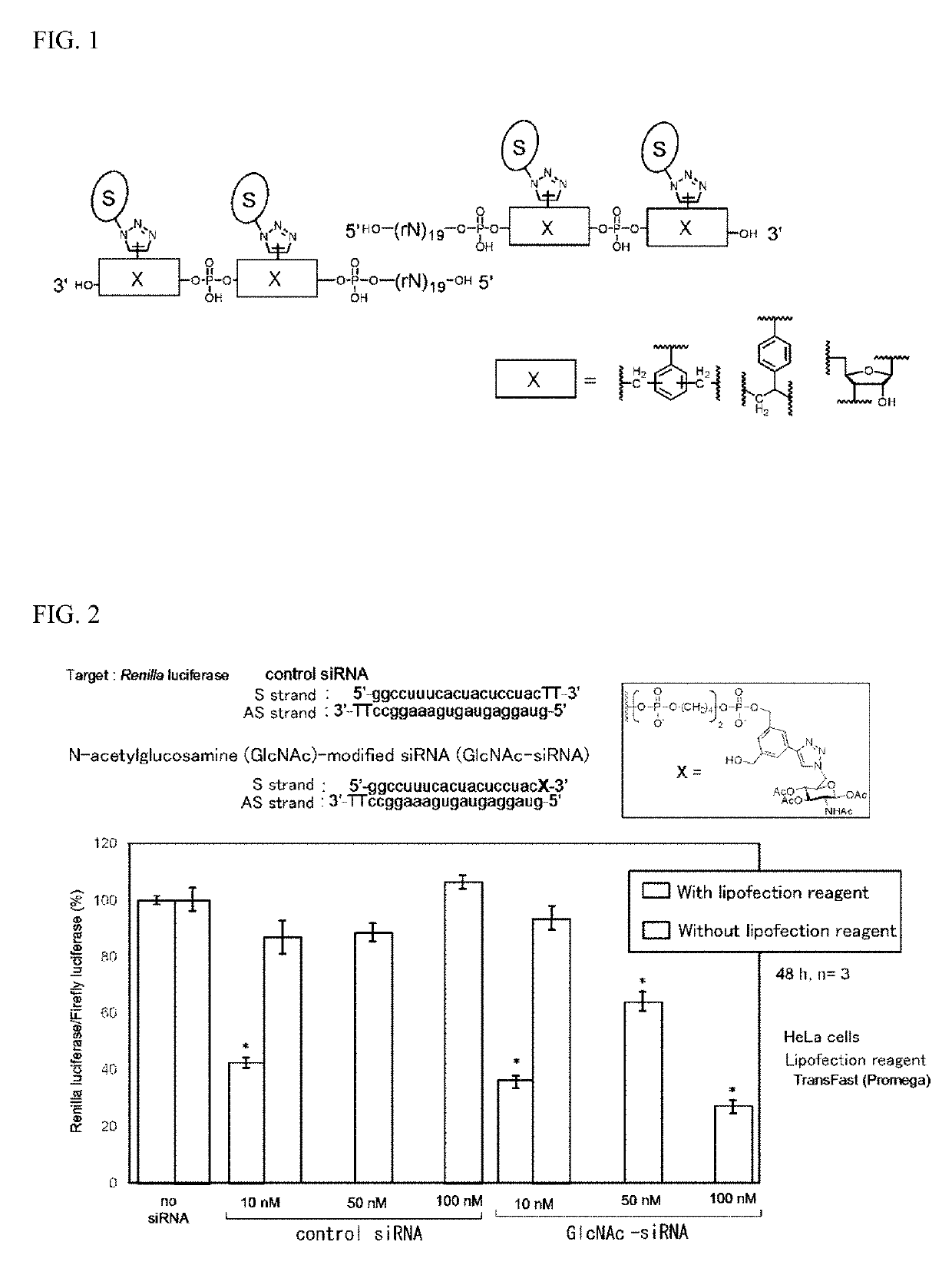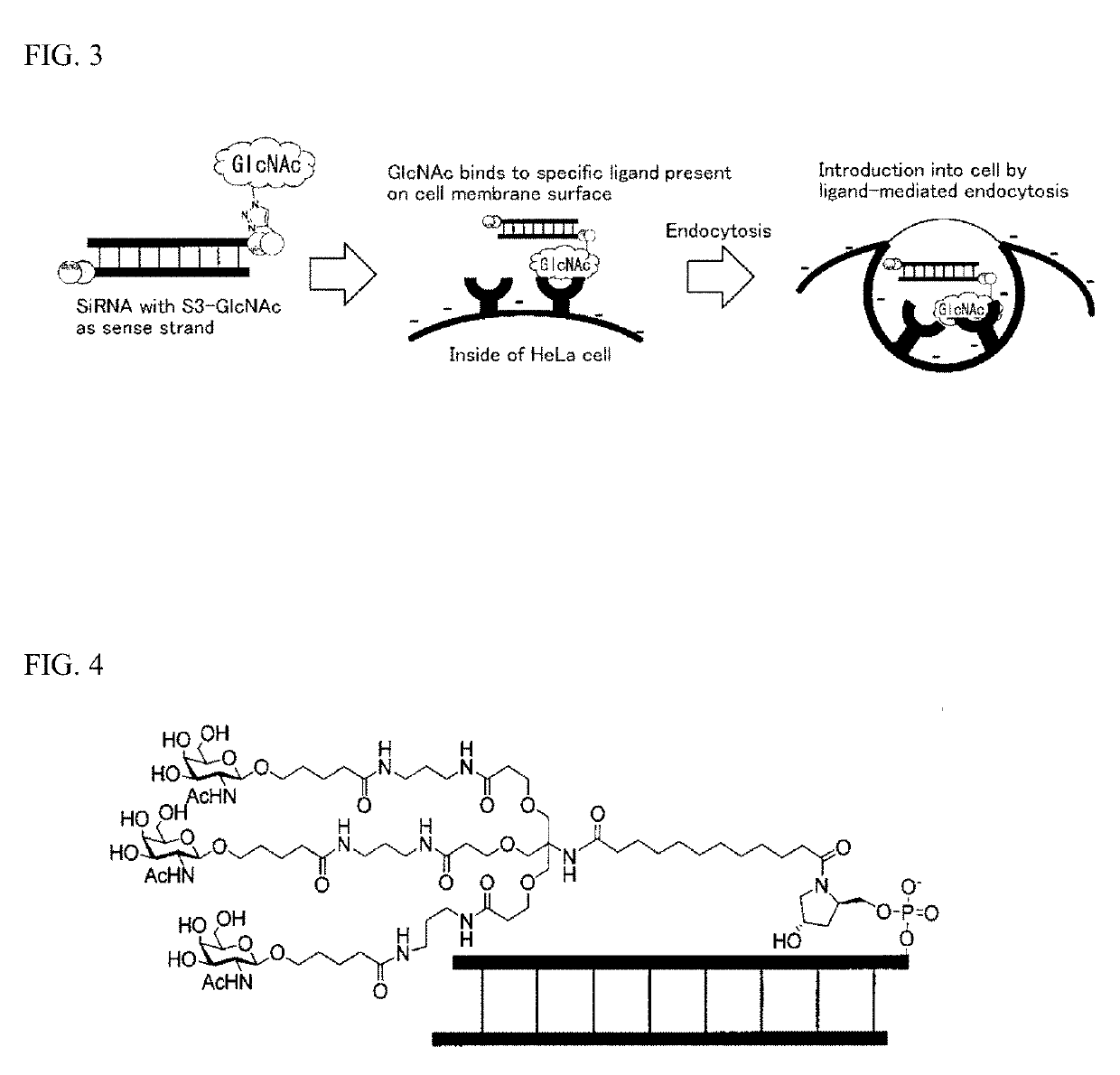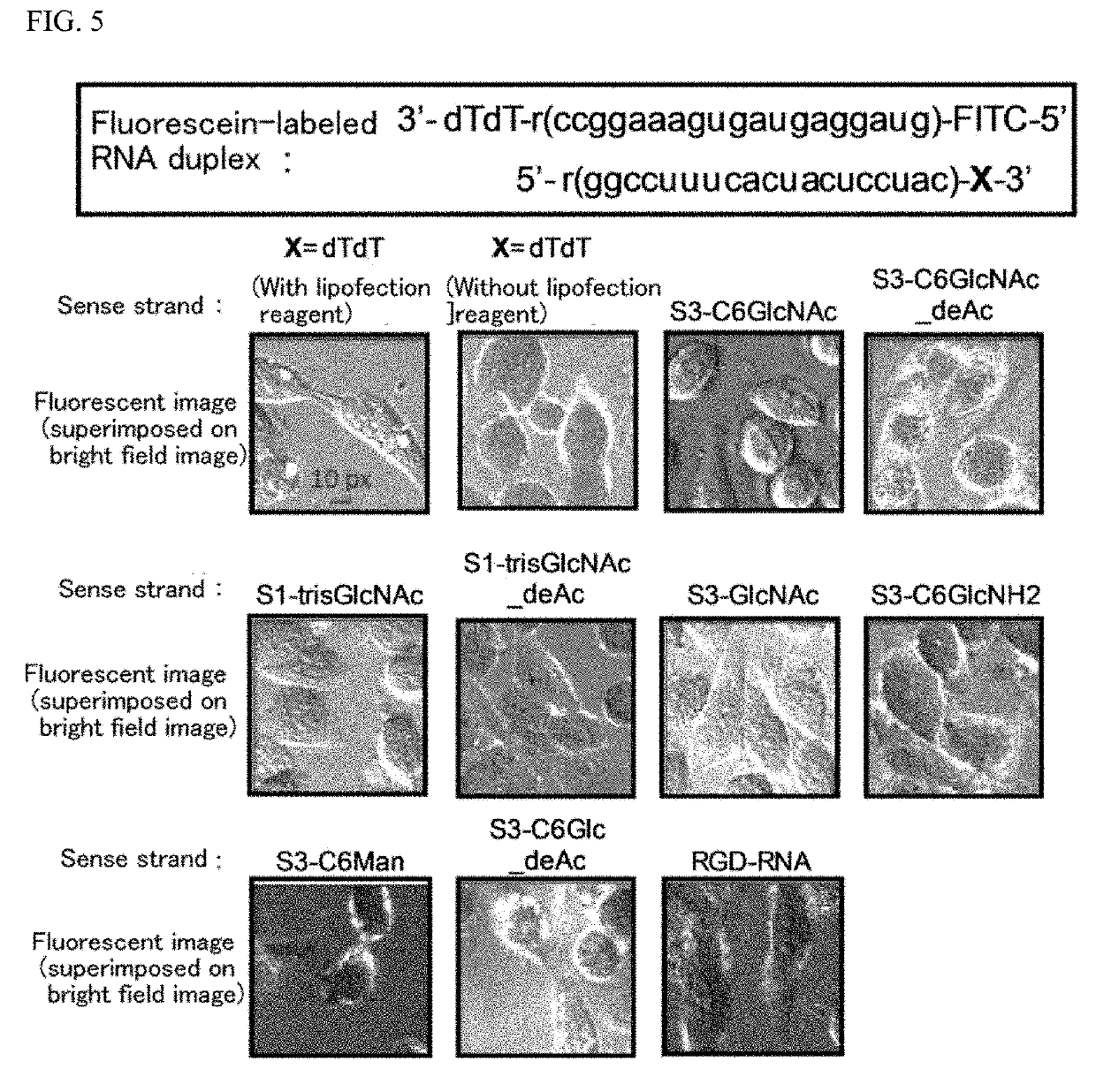Oligonucleotide derivative, oligonucleotide construct using the same, and methods for producing them
a technology of oligonucleotide and derivative, which is applied in the direction of sugar derivates, esterified saccharide compounds, drug compositions, etc., can solve the problems of complex operation, lack of cell selectivity, toxic to liver and kidney, etc., and achieves the effect of easy synthesizing
- Summary
- Abstract
- Description
- Claims
- Application Information
AI Technical Summary
Benefits of technology
Problems solved by technology
Method used
Image
Examples
examples
[0086]Hereinbelow, examples of the present invention will be specifically described in detail.
(Preparation of Amidited CPG Resin)
[0087]A compound 6 as an amidited nucleotide derivative and a compound 8 as a CPG resin were synthesized through a synthetic route shown in the following schemes I and II. More specifically, the amino group of dimethyl 5-aminoisophthalate 1 was iodinated to obtain a compound 2 in a yield of 55%, and then an iodine group was converted to trimethylsilylacetylene to obtain a compound 3 in a yield of 95%. Further, reduction and detrimethylsilylation were performed to obtain a compound 4 in a yield of 70%.
[0088]
[0089]The thus obtained compound 4 was modified with 4,4′-dimethoxytrityl chloride (DMTrCl) as shown in Scheme II to obtain a compound 5 in a yield of 49%, and the compound 5 was further amidited to obtain a compound 6 in a yield of 38%. Further, the compound 5 was succinylated, and then a CPG resin was modified therewith to obtain a compound 8 with an a...
PUM
| Property | Measurement | Unit |
|---|---|---|
| temperature | aaaaa | aaaaa |
| UV wavelength | aaaaa | aaaaa |
| pH | aaaaa | aaaaa |
Abstract
Description
Claims
Application Information
 Login to View More
Login to View More - R&D
- Intellectual Property
- Life Sciences
- Materials
- Tech Scout
- Unparalleled Data Quality
- Higher Quality Content
- 60% Fewer Hallucinations
Browse by: Latest US Patents, China's latest patents, Technical Efficacy Thesaurus, Application Domain, Technology Topic, Popular Technical Reports.
© 2025 PatSnap. All rights reserved.Legal|Privacy policy|Modern Slavery Act Transparency Statement|Sitemap|About US| Contact US: help@patsnap.com



